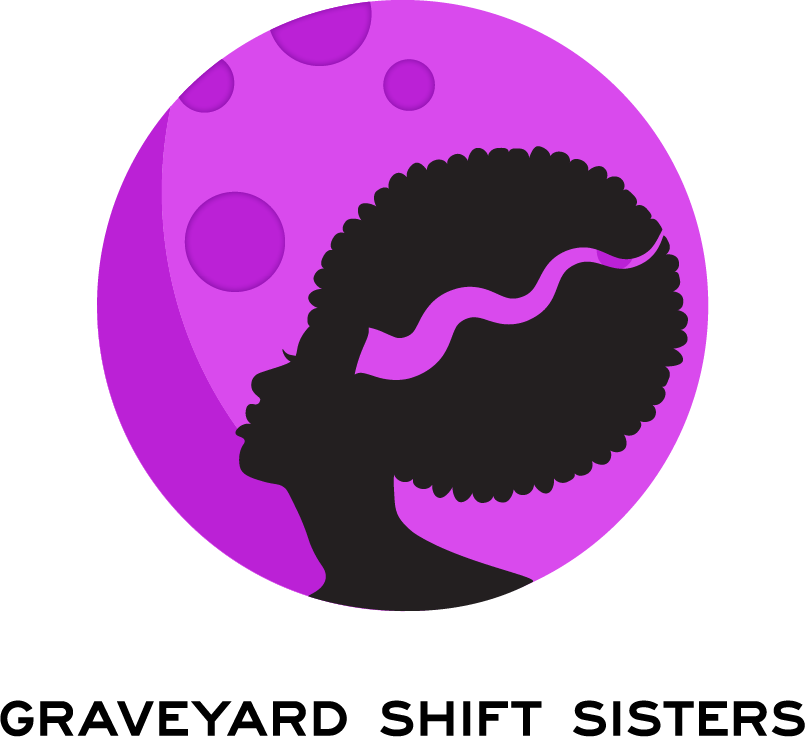Black Horror Films: A Historical Odyssey
By theorizing Blacks’ participation in horror this way, I am trying to make clear that though Blacks have been part and parcel to the genre since its beginning, how they are represented varies. It is easier to understand if we can think about films such as Nigger in a Woodpile (1904) or The Birth of a Nation (1915) as horror films, or more obvious horror films such as The Serpent and the Rainbow (1988) or Candyman (1992).
In these films, Blacks and Blackness--their historical experiences and cultural tropes--are often exploited objects or window dressing. Their race and culture serve a supporting role, tasked largely to advance the cause of White superiority while asserting Black deviance. The issue here is not about “positive” or “negative.” These kinds of dichotomies are not easily applied to the horror genre. The point is better revealed in Black horror films which focus on the Black cultural milieu, treat Blacks as subjects, and their life and culture in far more whole, full, and complex ways. Ganja and Hess (1973), Def by Temptation (1990), and Tales from the Hood (1995) accomplish this. (from my interview with Dr. Coleman that can be read in full here)
With that distinction, gave rise to narrowing my focus on films that talked back with their targeted audiences during their sociopolitical periods in American history. Below are the ten I felt left an important indent on Black participation in cinema and challenged ideas of horror while staying true to its conventions.
Son Of Ingagi (1940)
Son Of Ingagi (1940)
Screenwriter and actor Spencer Williams Jr. had one goal in
mind as a filmmaker: a film that elevated the image of African Americans during
a time of great resistance to any change in the roles given to Blacks by
Hollywood. Not to be entirely entangled with the appalling “documentary” that
suggested African women breed with apes titled Ingagi from a decade earlier, Son
was an exercise in centering Black characters, men and women, as scientists,
lawyers, and interestingly, shows the vital communal structure to the Black
community pre- 1960s Civil Rights Movement. Son
could be read as a creature feature where a Dr. Helen Jackson (Laura Bowman)
keeps an ape/human hybrid in her home that eventually becomes brutish and
homicidal. Heralded as the first Black horror/sci-fi film, Son Of Ingagi is a solid first in early genre cinema.
The Blood Of Jesus
(1941)
In step with Ingagi’s successful execution of holistic portrayals of African American characters, Spencer Williams came back the following year with a directorial debut and supernatural morality script that positioned Martha (Cathryn Caviness), a devout Baptist woman in between dimensions after her non-religious husband (played by Williams) fatally shoots her accidentally while out hunting. The devil takes her on a tempting journey through the glamorous city life where her faith is tested. The plot may not be entirely captivating but for the 1940’s with its strict industry “Code” that all filmmakers were dependent upon, The Blood Of Jesus remains among a revolutionary few horror films, even to this day, to have both a Black director and a central, Black female protagonist that is fully developed.
Blacula (1972)
In step with Ingagi’s successful execution of holistic portrayals of African American characters, Spencer Williams came back the following year with a directorial debut and supernatural morality script that positioned Martha (Cathryn Caviness), a devout Baptist woman in between dimensions after her non-religious husband (played by Williams) fatally shoots her accidentally while out hunting. The devil takes her on a tempting journey through the glamorous city life where her faith is tested. The plot may not be entirely captivating but for the 1940’s with its strict industry “Code” that all filmmakers were dependent upon, The Blood Of Jesus remains among a revolutionary few horror films, even to this day, to have both a Black director and a central, Black female protagonist that is fully developed.
Blacula (1972)
You have to forgive taglines such as “His bite was outta sight!” and “Dracula’s Soul Brother”. Blacula is easily one of the most well known and well executed Blaxploitation films of its era. It registers as textbook Blaxploitation horror, a term that defines a sub-genre most prominent during the 1970's. Veteran
actor William Marshall plays the title role as a fallen African prince turned
vampire who awakens in 1970's Los Angeles. When he meets Tina
(Vonetta McGee) a dead ringer for his past wife, Princess Luva, the story turns more sympathetic towards his longing for love, companionship, and wholeness. With a
Black director (William Crain) and Marshall’s behind the scenes imprint on
creating a thoughtful character with a meaningful backstory, Blacula became more than cheap
exploitation fare, capturing fictional truths of the slave trade with
inter-workings of a love story mixed with 70s funk, style, and horror
storytelling foundations.
Scream Blacula Scream (1973)
Scream Blacula Scream (1973)
High off the coattails of a successful predecessor, Scream Blacula Scream turned out to be a worthy sequel, giving Marshall’s character a true chance at redemption. Scream enhances Blacula’s story as a contradictory tragic monster with twinkles of the gothic horror icons of the
1930’s as he confronts contemporary issues within the Black community, gaining the affection of Lisa (played by the incomparable
Pam Grier) as the key to breaking the curse of his vampirism, all while building a
vampire army during his downtime. Scream
balances solid character development with more suspense and delightful (if dated) special
effects sequences.
Ganja and Hess (1973)
Ganja and Hess (1973)
Rogue visionary Bill Gunn wrote and directed a movie that
his producers saw unsatisfactorily contrary to their potential cash in on the
Blaxploitation craze. Refusing to make a simplistic “Black vampire film,” Gunn
executed a piece that invites an audience into the intimate domain of blood
imbibing as a metaphor for addiction with an unlikely fluidity alongside other
themes such as love, sex, class, and desire. Dr. Hess Green and Ganja
Meda (played by Night Of The Living Dead’s
Duane Jones and cult cinema unsung icon Marlene Clark respectively) demonstrate
performances so nuanced and decadent, that in a perfect world both would’ve
been prime Oscar contenders. Ganja &
Hess went on to become the critics’ choice at the 1973 Cannes Film Festival
but ultimately tanked in the US, going through the ringer of massive editing
and alternative titles such as Blood
Couple and Double Possession.
Fortunately, the film has seen a slight resurgence as the original director’s
cut has been restored for future generations to enjoy.
Sugar Hill (1974)
A fantastic supernatural revenge film that centers Diana ‘Sugar’ Hill (Marki Bey) as the protagonist who ensures greedy (mostly white) thugs get their comeuppance for killing her man. This brand of linear storytelling fun is riddled with more overt notions of “Black Power” and taking “the man” down more than any other Blaxploitation horror film.
In the likeness of Cleopatra Jones, Coffy, and other title characters of this film genre, Bey’s Sugar represented a ‘By Any Means Necessary’ attitude with sex appeal and style that was well entangled in the celebratory as well as problematic politics of gender at its time. Any way you see it, Sugar Hill is a righteous addition to Black horror and a standout for creating a memorable heroine.
Def By Temptation (1990)
Heralded by Troma Entertainment president Lloyd Kaufman as
one of the “best” films produced by his company, Def By Temptation goes old-old school in the vein of The Blood Of Jesus as a straight forward
morality tale with modern spin. Writer and director James Bond III plays Joel,
a minister-in-training from the South who travels to New York to visit his fast
lane brother, K (Kadeem Hardison). Getting a taste of the nightlife, Joel
runs into a beautiful woman (Cynthia Bond) who’s actually an evil succubus that has been having her way with the men who occupy K’s neighborhood
bar. Any explanation of this film really underestimates the way in which it
lives up to Kaufman’s assertion. Temptation
manages to be both campy and chilling even as it tends to learn towards the
very narrow dichotomy of good vs. evil. For its time, it received critical
praise for being a thoughtful all Black horror film removed from Hollywood interference.
Tales From The Hood (1995)
Anthology horror at its finest, Tales From The Hood is a buffet of the horrors of reality (police brutality, gang violence, slavery, domestic abuse) mangled with the supernatural (monsters, vengeful ghosts, “voodoo dolls”, and demons). Drawing clear inspiration from 1972’s Tales From The Crypt, Hood finds three gang members on a run at a funeral home with its owner Mr. Simms (Clarence Williams III) who tells them four cautionary tales about the home’s current deceased inhabitants.
Among this list, Hood for my generational sensibilities, manages to be the most terrifying and visually jarring; drawing from images in the bowels of the most violent demonstrations of white supremacy in American history. Which is only intensified by a congruent soundtrack. With the right balance of Black aesthetics and general appeal, Hood reads as the most transparent in examining issues within the Black community during its release.
Beloved (1998)
Among this list, Hood for my generational sensibilities, manages to be the most terrifying and visually jarring; drawing from images in the bowels of the most violent demonstrations of white supremacy in American history. Which is only intensified by a congruent soundtrack. With the right balance of Black aesthetics and general appeal, Hood reads as the most transparent in examining issues within the Black community during its release.
Beloved (1998)
Beloved was
originally a novel by award winning author Toni Morrison. Leaning more towards
the southern
gothic, Beloved has been debated in
personal and professional circles on its “horror” label. The easily identified
theme of the story is the horrors of American slavery, but Beloved also brands itself with paranormal occurrences that fracture
a family during the American Reconstruction period along with the bitterness of
slavery’s past coming back to haunt the matriarch of the family, Sethe (Oprah
Winfrey) literally in the form of the developmentally arrested ghost of her
first child (Thandi Newton). Beloved
is quite effective in regards to imagery and tone. Far from a comfortable watch, it forces
you to consider the uniquely alternative ways horror is utilized on screen.
Bones (2001)
Bones (2001)
The quintessential contemporary Black horror film that finds its rhythm with 70's blaxploitation aesthetics, Bones expands the vengeful spirit narrative in various ways unseen
before. Implementing a love story with a picture of the destruction of the
Black community by drugs was a delicate risk for this horror film. Fortunately,
it pans out well with a nice snapshot of intraracial class conflicts to boot.
Rapper Snoop Dogg’s title character is yet another sympathetic villain that
suggests we look beyond his visceral undead tyranny through flashbacks that lead to his earthly demise and take heed to the motives of peripheral characters as dueling, imposing
forces. Bones is in some beats silly, but consistently remains serious
enough as a genre film that delivers on nuance and great visuals due in part to
director Ernest Dickerson’s background in cinematography. It could be argued,
even if this film isn’t your flavor, you can certainly find value in its
existence.

